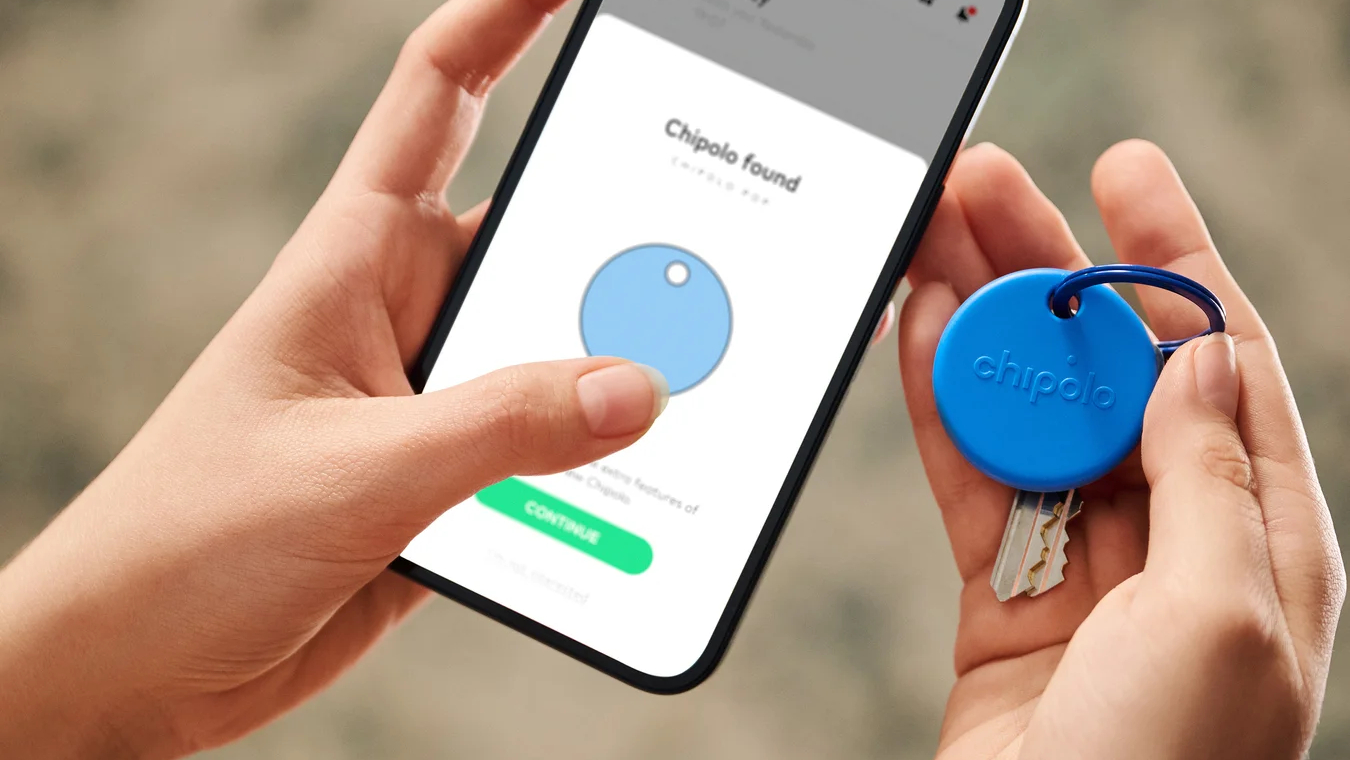9 ways to get more out of your solar panels this winter
Boost your solar energy output with these top tips
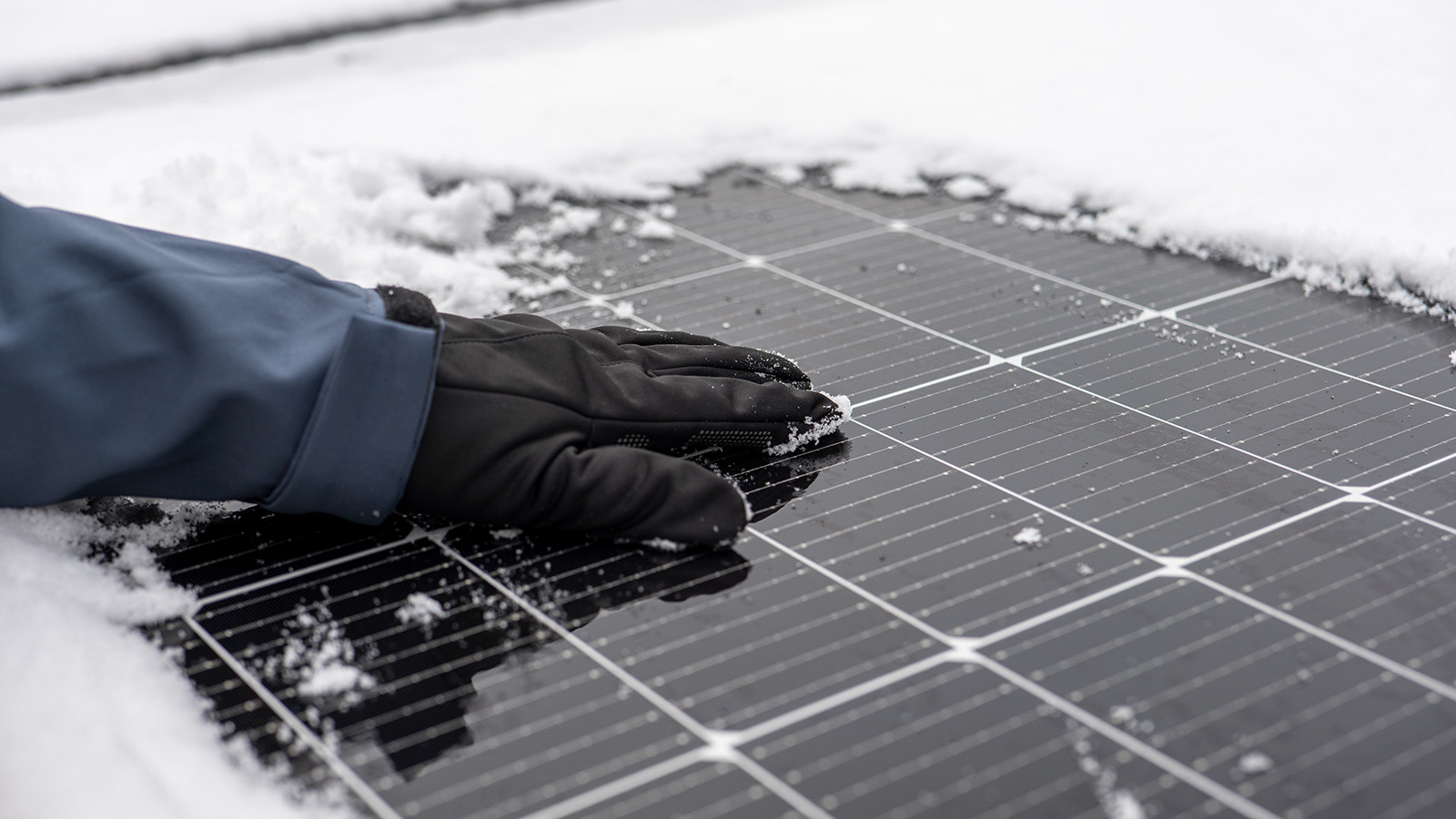
Solar panels are one way to cut down on your energy bills and reduce your carbon footprint, but winter can be a challenging time. With cloudier days and shorter daylight hours, solar panels can struggle during these darker months, when our energy usage is higher than in the warmer, brighter seasons.
With your heating and clothes dryer going at full pelt, you may need to rely on the grid for some of your energy needs. However, there are several easy steps to take to ensure you’re getting the most out of your solar panels in winter.
Whether you’re already using a solar panel system or researching things to know before buying solar panels, there are many ways you can still benefit from the sun’s energy. Here are 9 ways to get more out of your solar panels this winter.
1. Clear the snow
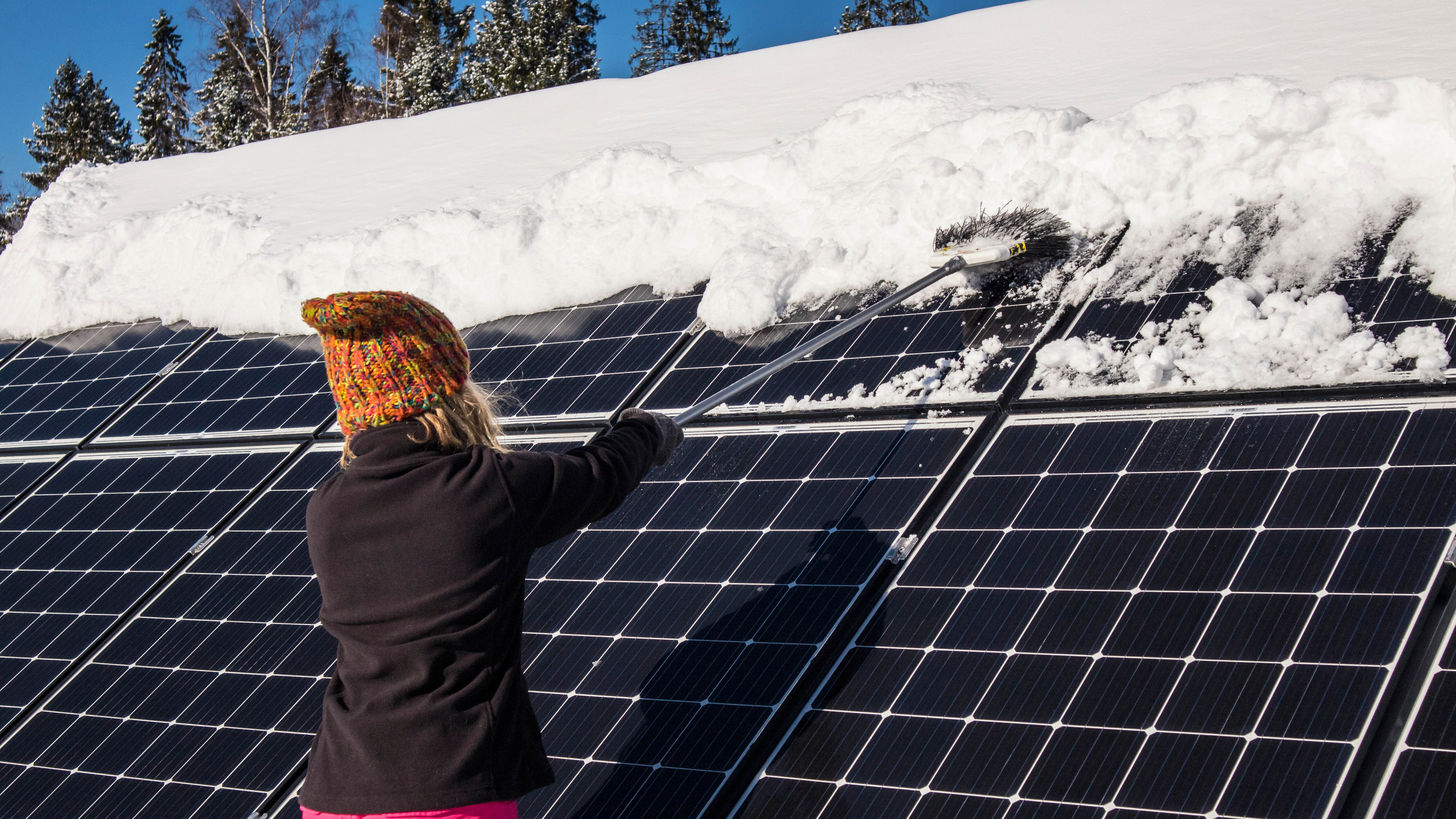
While we all love a bit of snow — one clear sign that winter is well underway — solar panels are not so keen. When covered in a blanket of snow, the electricity generating solar cells are blocked from sunlight and cannot produce energy. A thick snow covering can also damage the panels, with anything over 3 feet deep causing a weight issue.
Project Solar UK says: “Getting rid of a snowy build-up from your solar panels drastically improves their efficiency, but first, it’s important to be aware of the best ways of getting this done.”
It suggests one option is to spray warm water from your garden hose over the snow, but check that the water isn’t too cold and freezes or too hot, so it cracks the solar panels.
You could also try sweeping the snow off the roof panels, especially if you have an extendable broom. Project Solar UK recommends using a foam brush head rather than one with bristles to avoid scratching the panels. But be mindful of health and safety, and if the job is not safe for you to do, call in a professional.
Sign up to get the BEST of Tom's Guide direct to your inbox.
Get instant access to breaking news, the hottest reviews, great deals and helpful tips.
It’s also worth thinking ahead before your solar panels are installed, especially if you live in an area where heavy snowfall is expected. Some solar panels come with heating systems already installed, which is worth the investment to prevent snow from forming a blanket.
Snow isn't just a problem if you have solar panels, extreme temperatures can cause havoc with your plumbing system, leading to frozen and burst pipes. Be sure to winterize your pipes before the cold weather sets in.
2. Give them a clean
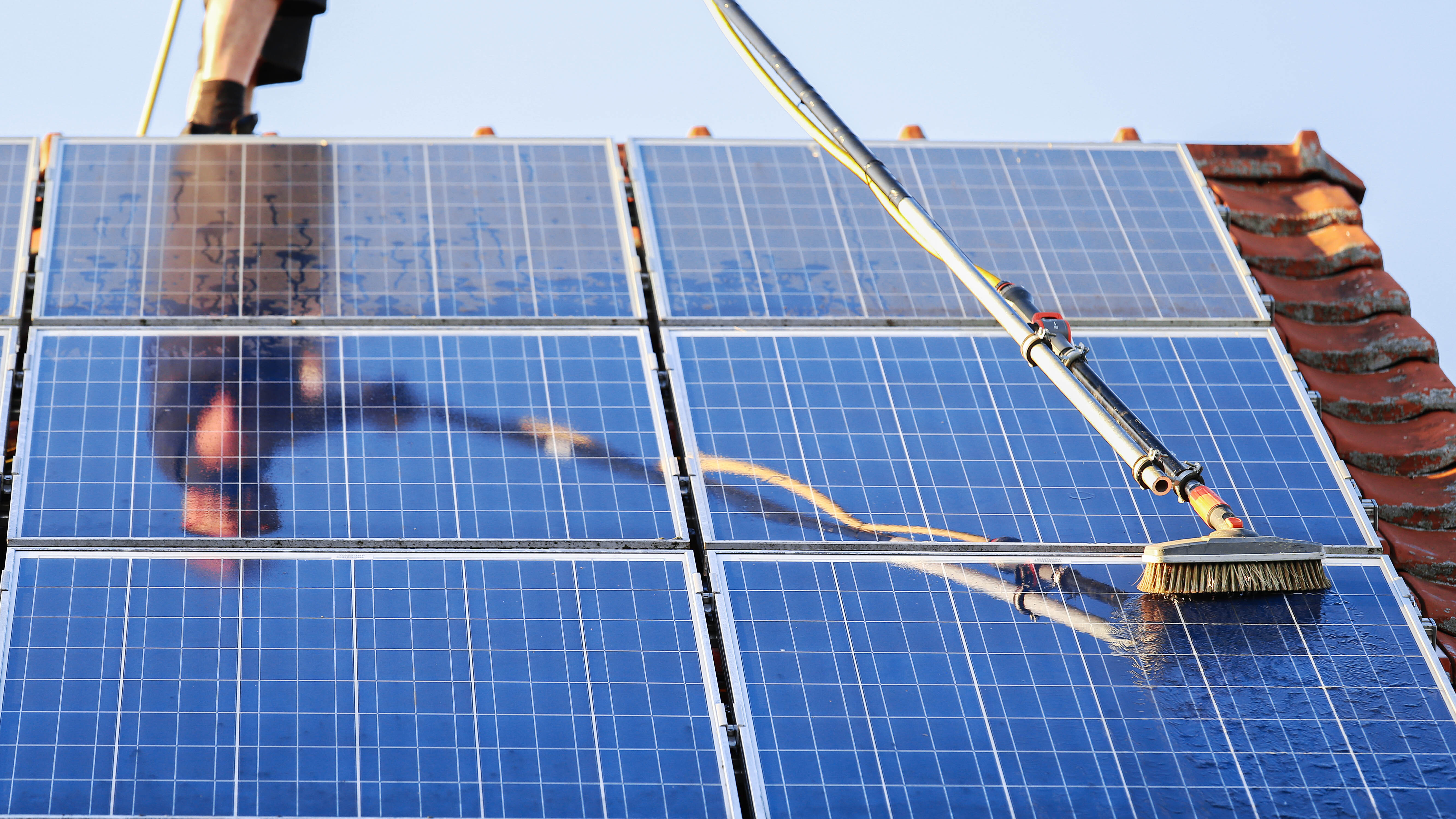
Dust, leaves and bird droppings all contribute to a build-up of debris on your solar panels, which can hamper the sun from reaching the cells and reduce their efficiency. Although rainwater will do a good job in washing away some of the grime, they may need a regular clean to keep them working to their optimum, ensuring your investment is well spent.
A quick spray with water and a light sweep with a long-handled brush are all that’s needed to keep your panels clean. Avoid using any abrasive cleaning materials which may scratch the cells. The frequency of cleaning will depend on your landscape and weather conditions, but a thorough clean twice a year should be sufficient.
If climbing on the roof is required, we'd recommend you call in a professional to clean them. Plenty of specialist cleaning firms, including window cleaners, will offer the service.
Although it’s easy to spot the build-up of grime on your panels, you can also monitor their performance and see any irregularities in their output, although you'll need a monitoring system to do this. A decrease in performance is a sure sign that they need a cleaning.
This 15.7-inch water brush includes 4 built-in jets that squirt water under pressure from the 65-foot hose. The water brush is connected to a pole, with sections that can be joined to extend to 40ft. Everything can be stored in the carry bag for easy storage and portability.
3. Tilt your panels
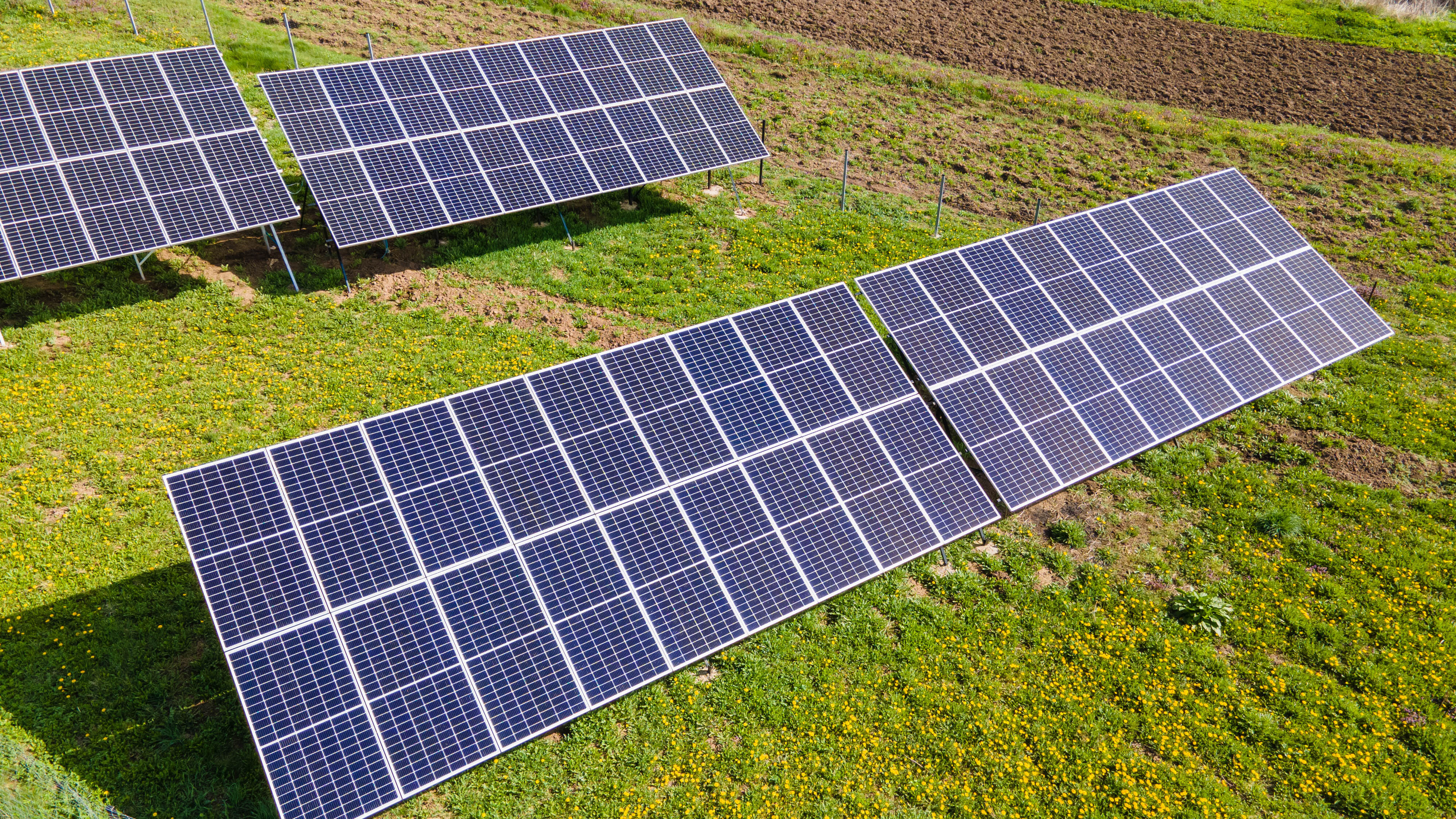
Solar panels are usually installed at the same angle as your roof — usually between 30-45° — and in a south-facing direction to optimize exposure to the sun. The tilt will encourage snowfall to slide off, while the sunny south-facing aspect will enable it to melt much faster than any other position.
However, in areas of heavy snow, or where sun exposure is more limited, it may be advisable to install the solar panels at an angle of around 60°. This also helps to generate more electricity in the winter months when the sun is lower in the sky.
Your installer should consider your location and the best angle to suit your annual energy production before fitting your panels.
4. Install a battery
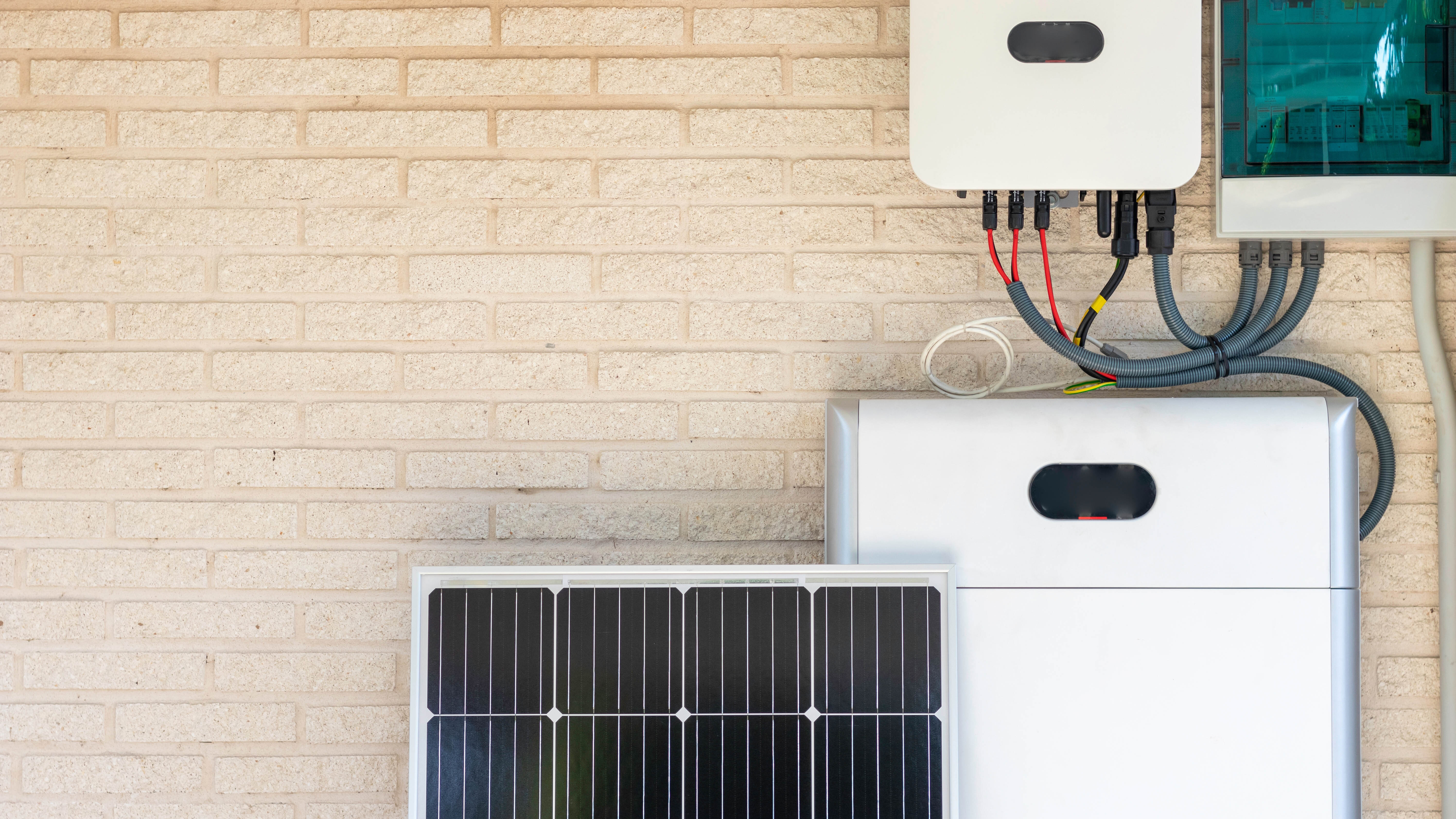
A battery is a good investment to ensure you have some energy in reserve for those duller days and it can help you save money and improve your solar panel’s performance.
Storing your own self-generated electricity will allow you to take advantage of those sunnier, warmer climes, when your energy usage is lower than during the chillier months. The alternative is to rely on your local grid when the sun goes down, leaving you with an unwelcome bill.
Whether to invest in a battery may depend on when you use your electricity. A battery is a good option if your usage peaks during the evening rather than the day. But what can you expect to pay? It will be based on the battery type, quality and lifespan, and will vary across the brand you buy, with EnergySage saying that the price also varies between states. However, it says that it usually costs $9,000 dollars to install solar batteries.
5. Maintain your solar panels
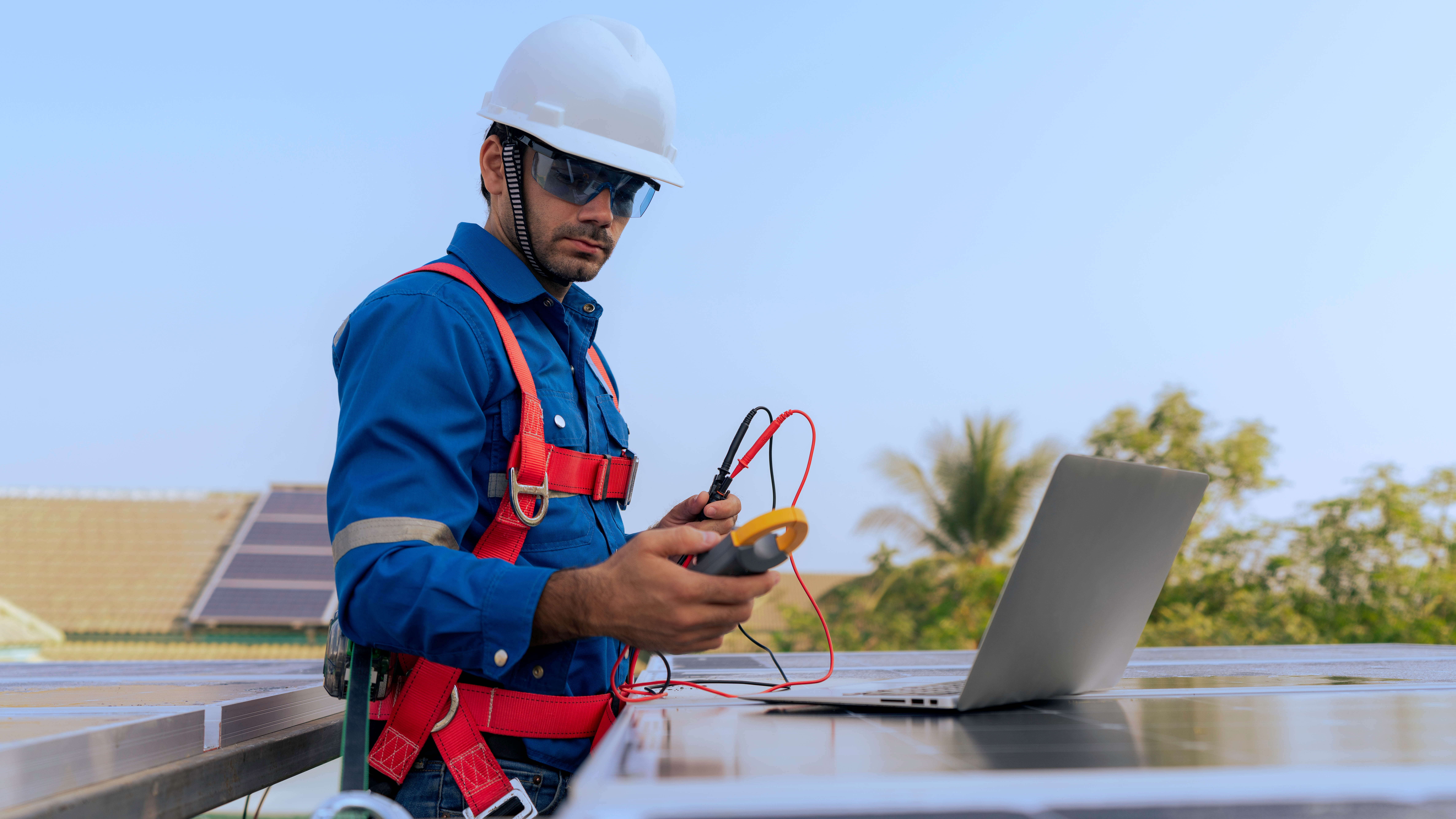
To keep your solar panels in tip-top condition, it’s worth asking your installer if they offer an annual maintenance check. Apart from spotting any external signs of wear and tear, such as scratches from debris and severe weather damage, which can hinder the sun from reaching the cells, they’ll be able to test the internal workings.
At any other time, if you notice a sudden drop in performance, it’s a good indicator that a fault needs repairing.
The Energy Saving Trust says you can expect newly installed solar panels to last for 25 years or more: "The only piece of equipment that will need replacing before the panels is the inverter."
The inverter's job is to change the type of electricity generated by your panels (DC) into the type of electricity that powers your household (mains voltage AC).
It also recommends doing a safety test of your solar panel system within 10 years of installation, and every five years after that.
6. Bird-proof your panels
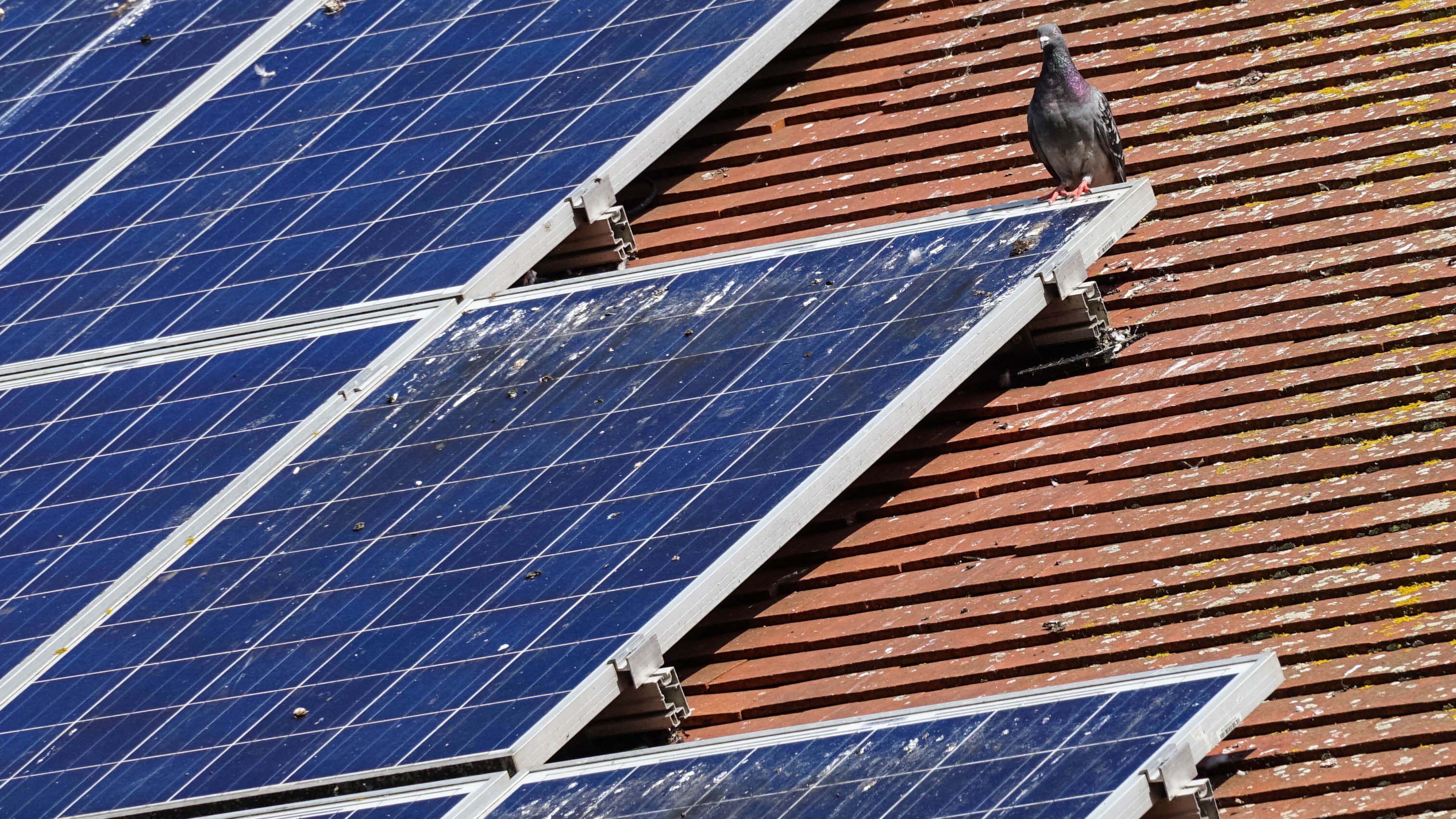
While many of us welcome wildlife into our gardens, when it comes to solar panels, we need to encourage our feathered friends to go elsewhere.
Pigeons are the main culprit. Their droppings cover the panels and reduce their effectiveness, while the high acidity damages and erodes wires. Their sharp talons can also damage and scratch the panels.
But what is the solution? If you plan to install solar panels and know that pigeons are a problem in your area, it’s cheaper to protect them from the outset. If you fit protection retrospectively, you will need to add on the price of the scaffolding once again.
There are several options to protect your panels, from bird mesh to bird blockers or a solar skirt, which prevents birds from nesting underneath the panels, to anti-roosting spikes, which stop them from settling on the roof. Alternatively, a simple decoy that mimics predators, such as an owl, may do the trick.
7. Be more energy efficient
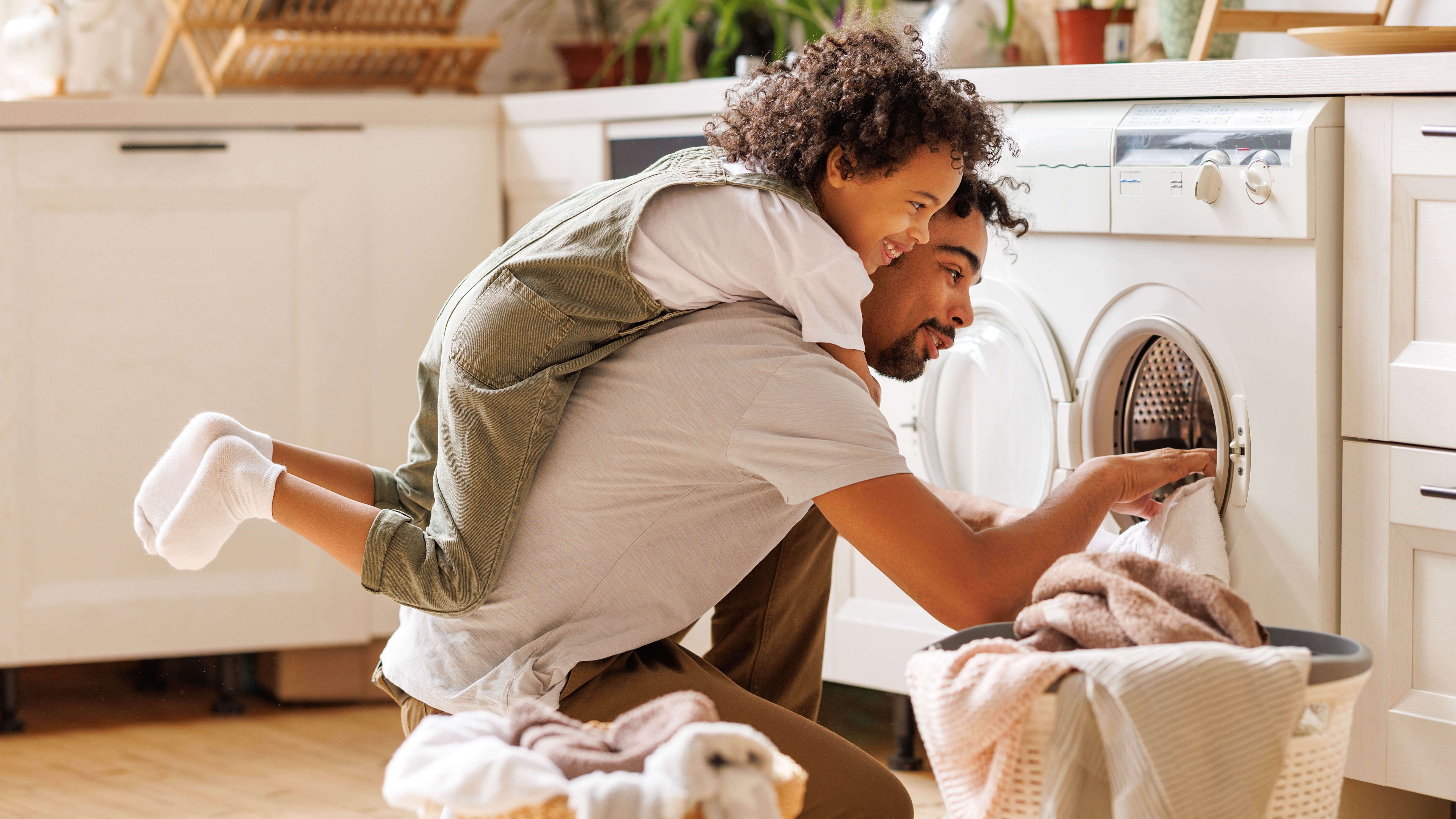
When your solar energy output goes down, one solution is to refocus on how and when you use your appliances. Simple swaps and changes can make a big difference in getting the most out of your solar energy output. If you use your washing machine during the night, so your clean laundry is ready to dry in the morning, swap to using the appliance during daylight hours.
There are other steps that you can take, such as changing to energy efficient light bulbs, which will help you save energy whatever the time of year.
8. Monitor your usage with an app

One way of getting the best out of your solar panels is to monitor your energy consumption throughout your home. You can do this by using an app to see when your energy use is high, moderate, and low, and then you can adjust your behavior pattern as needed. You might need to consider running your dishwasher and washing machine at different times, as their energy usage is high.
You can also connect your solar panels to an app to see when they are exporting the most energy, and change your energy consumption habits to make the most of the excess power.
9. Buy energy-efficient appliances
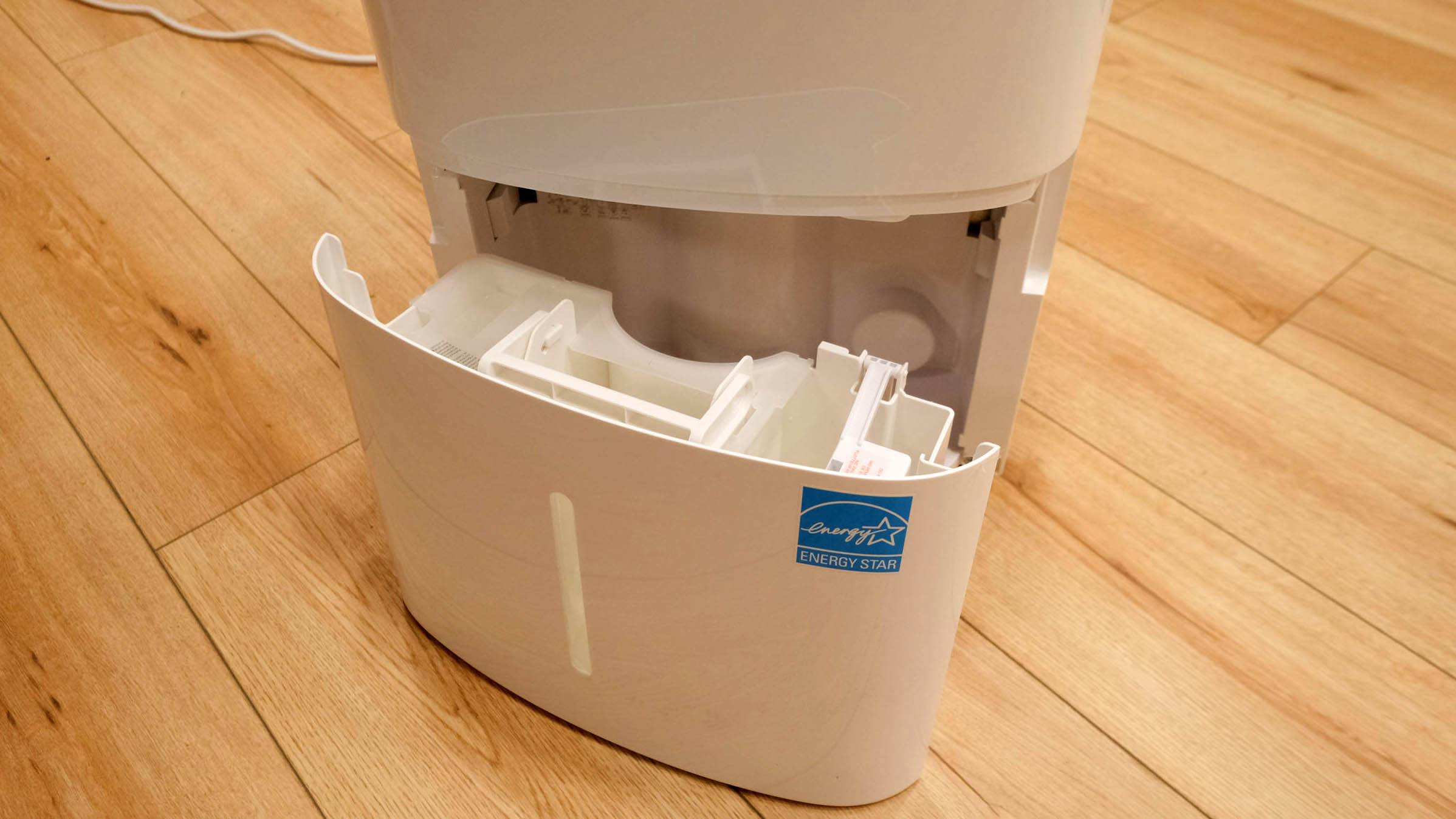
If you’ve already invested in solar panels, you’ll be keen to save energy where you can and reduce your carbon footprint. One way of decreasing your energy needs is to swap to energy-efficient appliances when replacing worn-out products.
Look for the Energy Star symbol when purchasing a new appliance, whether it’s a refrigerator or an electric range. The label indicates that the product has met high energy-efficient standards. You can also save money further in the U.S., where you can get up to $840 in rebates when you upgrade to an induction cooktop and other appliances.
More from Tom's Guide

Camilla Sharman has worked in publishing and marketing for over 30 years and has covered a wide range of sectors within the business and consumer industries both as a feature, content, and freelance writer.
As a business journalist, Camilla has researched articles for many different sectors from the jewellery industry to finance and tech, charities, and the arts. Whatever she’s covered, she enjoys delving deep and learning the ins and out of different topics, then conveying her research within engaging content that informs the reader. In her spare time, when she’s not in her kitchen experimenting with a new recipe, you’ll find her keeping fit at the gym. In the pool, stretching at a yoga class, or on a spin bike, exercise is her escape time. She also loves the great outdoors and if she’s not pottering about in her garden, she’ll be jumping on her bike for a gentle cycle ride.

